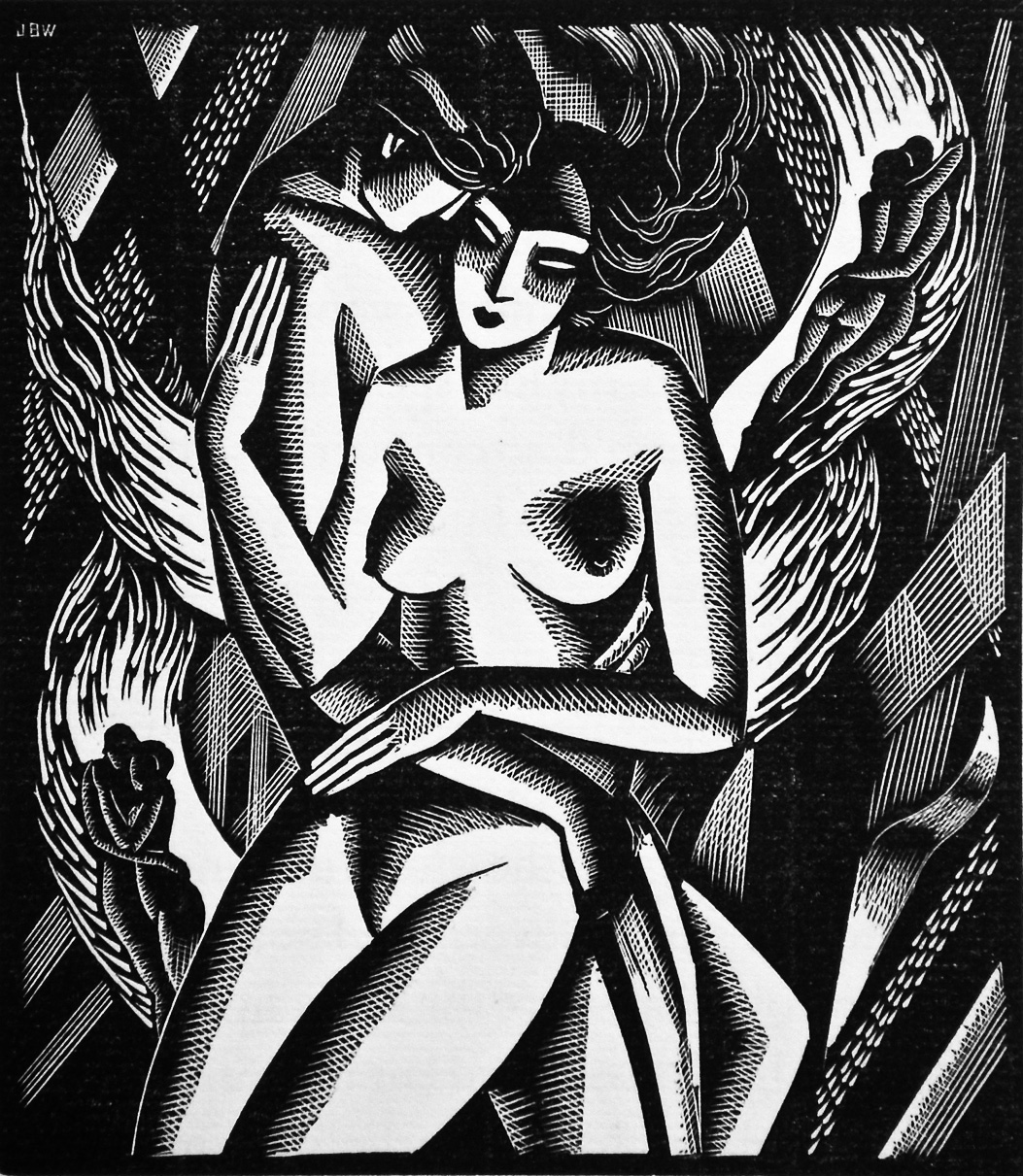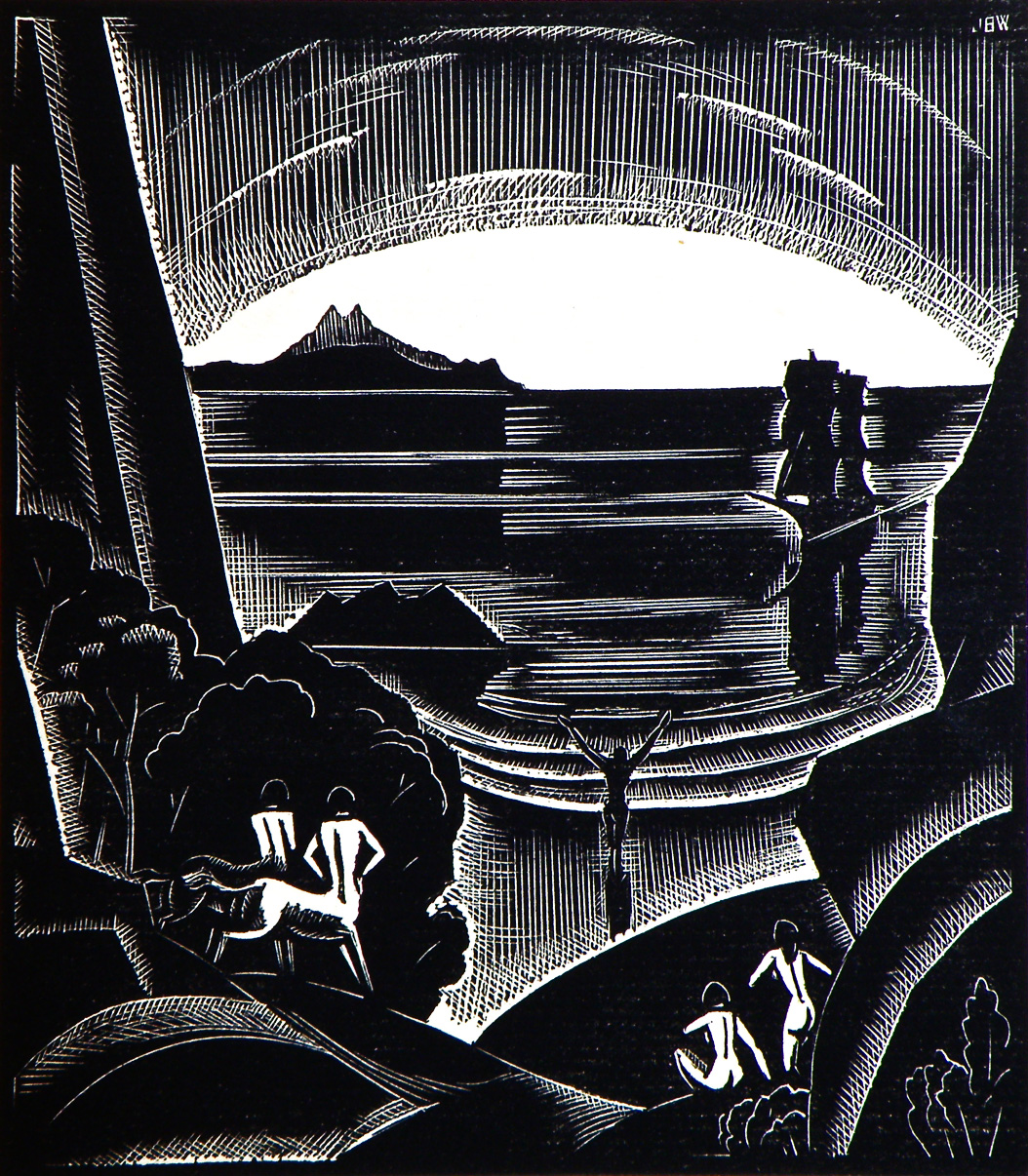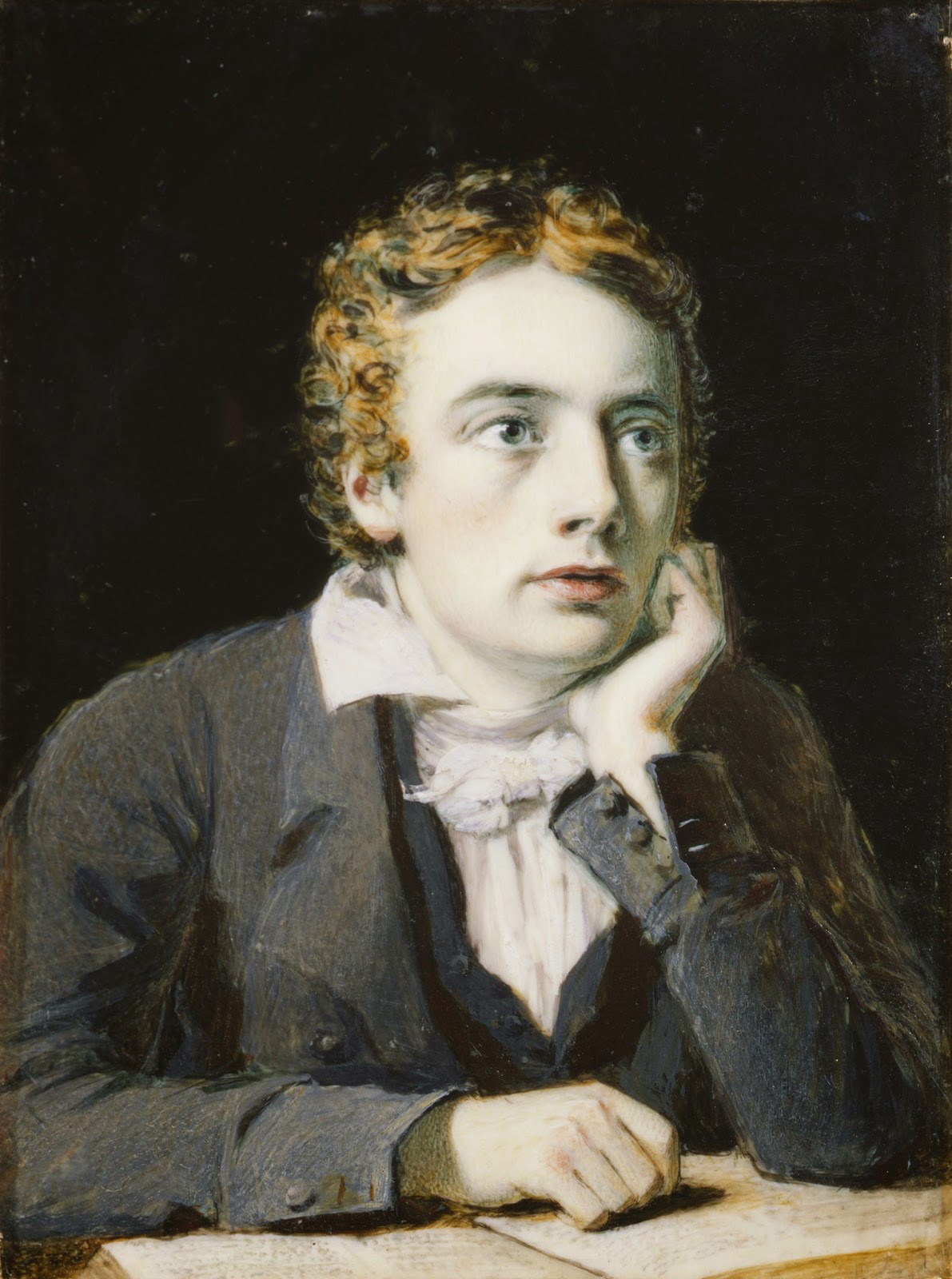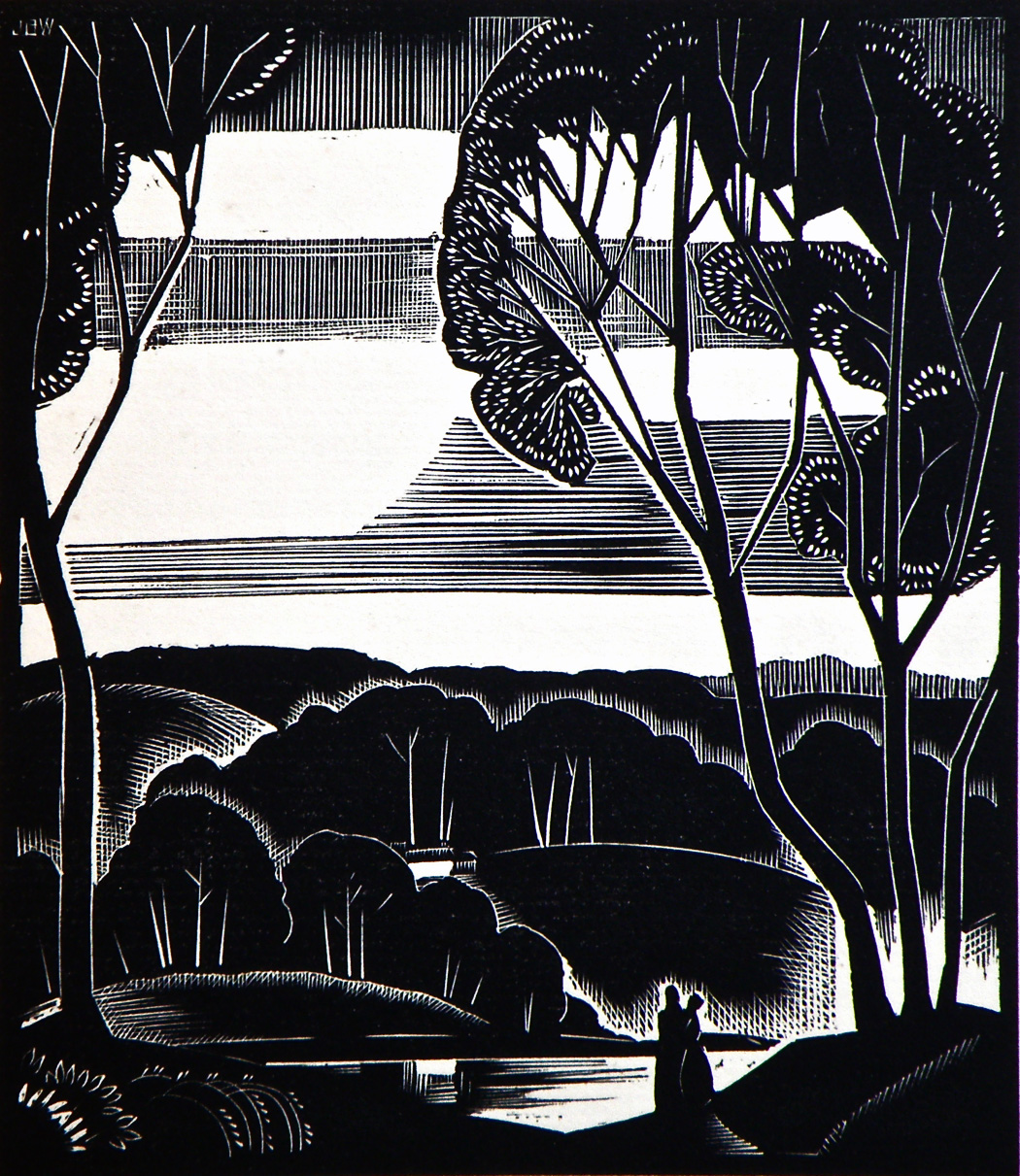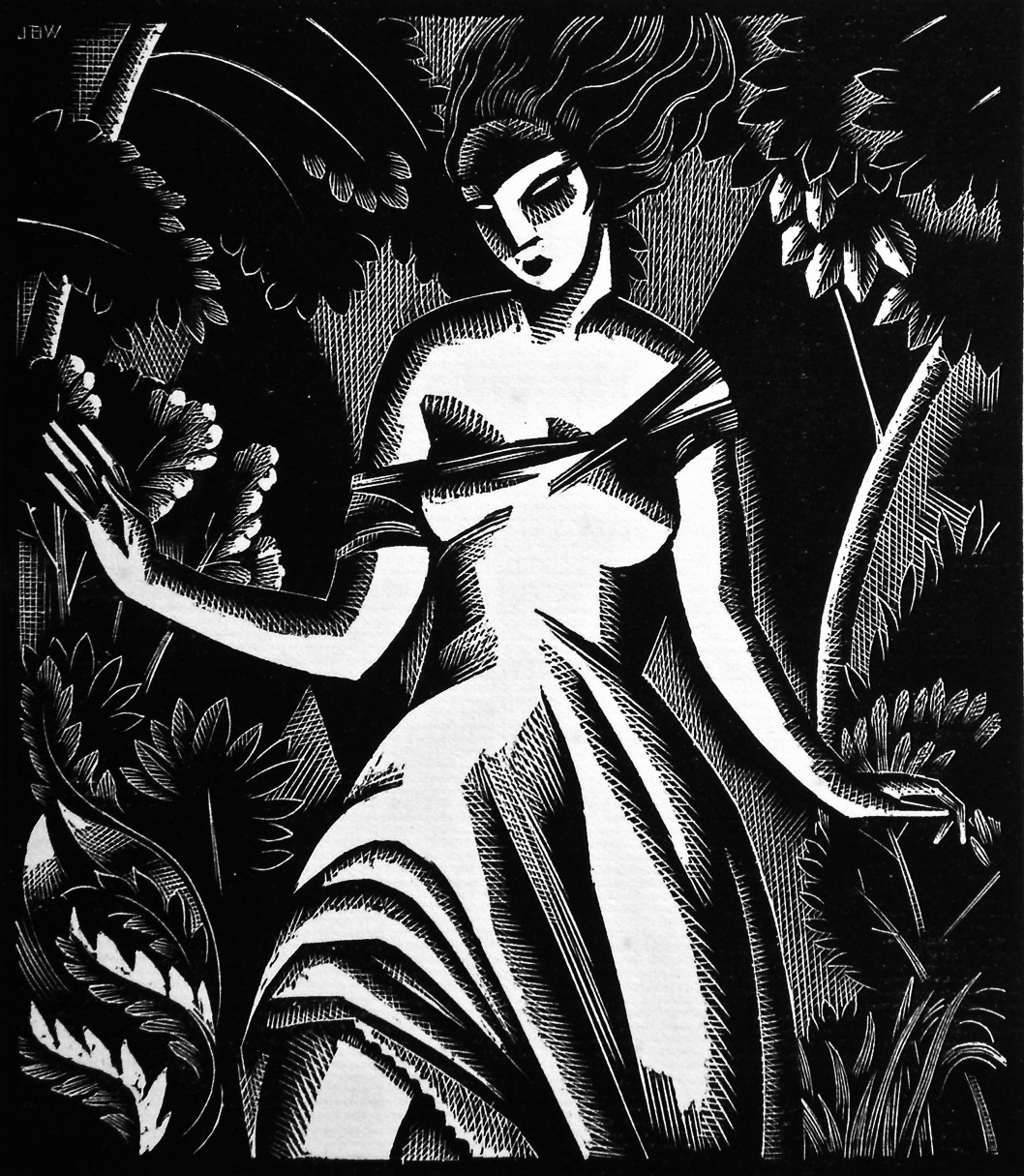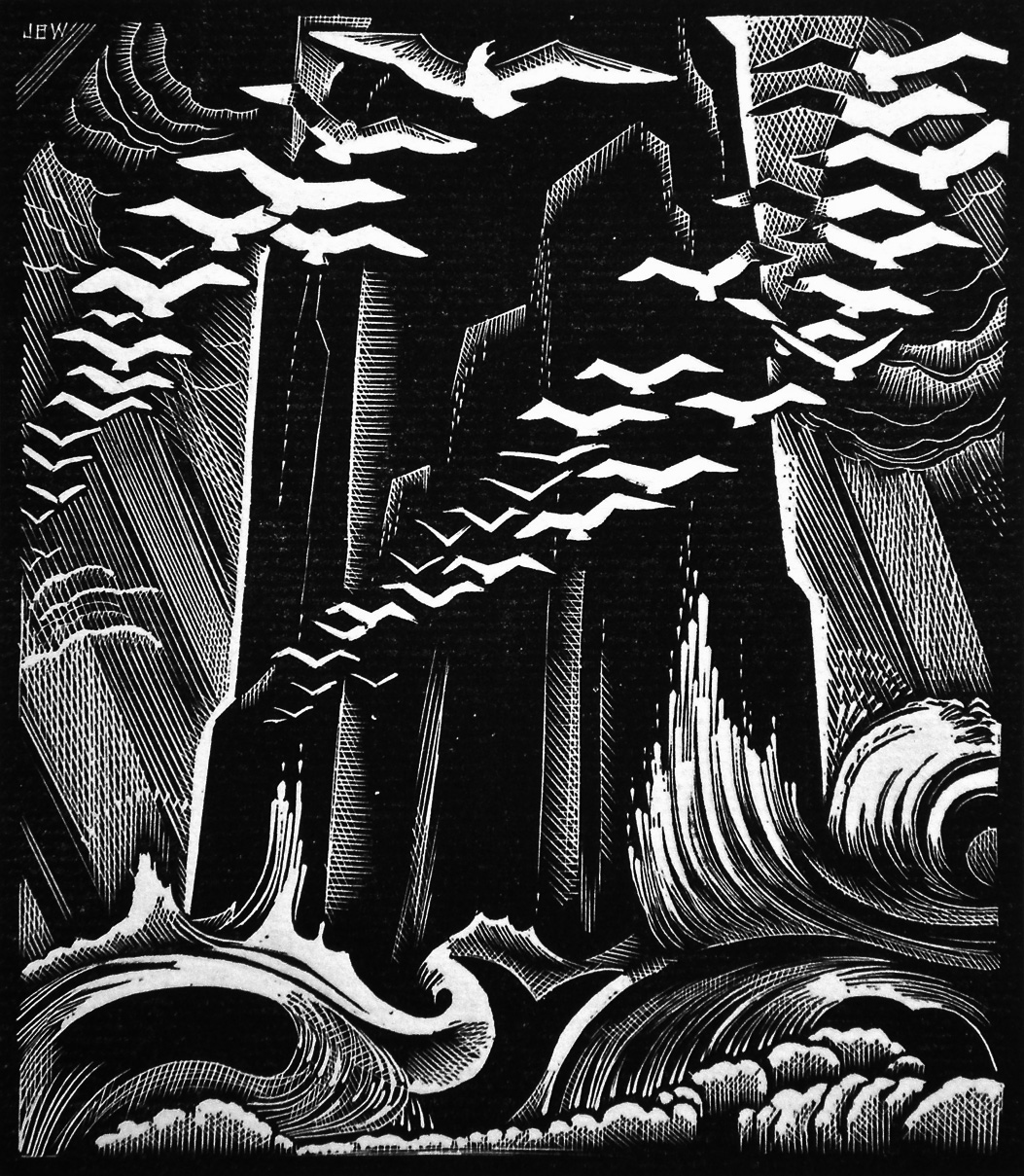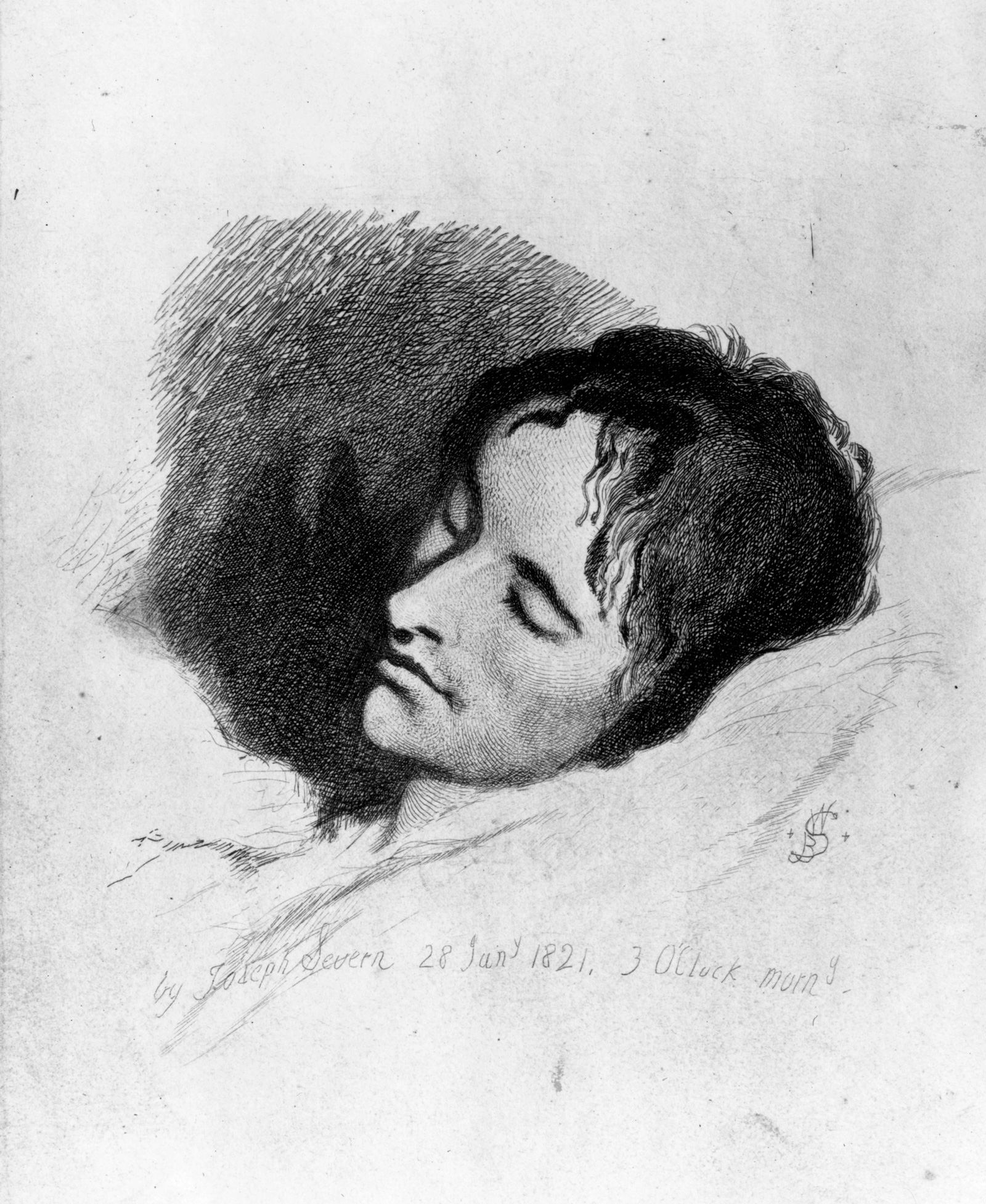In 1803, the guillotine was a common children’s toy. Children also had toy cannons that fired real gunpowder, and puzzles depicting the great battles of England. They went around chanting, “Victory or death!” Do childhood games influence character? We have to assume that they do, but let’s set aside such heartbreaking speculations for a moment. War—it’s not even a proper game—leaves influenza in its wake, and cadavers. Do childhood games typically leave cadavers behind in the nursery? Massacres in those little fairy-dust minds? Hoist the banners of victory across the table from the marzipan mountain to the pudding! It’s perhaps a dreadful thought, but we’ve seen clear evidence that both children and adults have a taste for imitation. Certainly, such questions should be explored, and yet let us allow that there is a purely metaphysical difference between a toy guillotine and war. Children are metaphysical creatures, a gift they lose too early, sometimes at the very moment they learn to talk.
John Keats (1795-1821) was seven years old and in school at Enfield. He was seized by the spirit of the time, by a peculiar compulsion, an impetuous fury—before writing poetry. Any pretext seemed to him a good one for picking a fight with a friend, any pretext to fight.
Fighting was to John Keats like eating or drinking. He sought out aggressive boys, cruel boys, but their company, as he was already inclined to poetry, must have provided some comic and burlesque treats. For mere brutality—without humor, make-believe, or whimsy—didn’t interest him. Which might lead a person to extrapolate that boys aren’t truly brutal. Yes, they are, but they have rules and an aesthetic. Keats was a child of action. He’d punched a yard monitor more than twice his size, and he was considered a strong boy, lively and argumentative. When he was brawling, his friend Clarke reports, Keats resembled Edmund Kean at theatrical heights of exasperation. His friends predicted a brilliant future for him in the military. Yet when his temper defused, he’d grow extremely calm, and his sweetness shone—with the same intensity as his rage had. The scent of angels. His earliest brushes with melancholy were suddenly disrupted by outbursts of nervous laughter. Moods, vague and tentative, didn’t settle over him so much as hurry past like old breezes.
A year before leaving Enfield—the Georgian-style school building would later be converted into a train station and then ultimately be demolished—John Keats discovered Books. Books were the spoils left by the Incas, by Captain Cook’s voyages, Robinson Crusoe. He went to battle in Lemprière’s dictionary of classical myth, among the reproductions of ancient sculptures and marbles, the annals of Greek fable, in the arms of goddesses. He walked through the gardens, a book in hand. During recreation breaks, he read Elizabethan translations of Ovid. Scholars have made a habit of pointing out that the poet didn’t know Greek. So what? Even Lord Byron insinuated that Keats hadn’t done anything more than set Lemprière to verse. In the same way that the translation errors from Greek don’t at all invalidate Hölderlin’s Der Archipelagus, Keats’s own transposed Greek perhaps allowed him to tear up the fields of Albion with the shards of classical ruins. He revealed to no one that he was an orphan. The tutors were glued to his side. He forgot his birthday and decided to study medicine. He learned how to leech, pull teeth, and suture. He observed cadavers on the dissection table that had been purchased off the resurrection men for three or four guinea each. The naked bodies were delivered in sacks.
Keats took notes and in the margins sketched skulls, fruit, and flowers. He felt alone. The “blue devils” settled along with him into the damp room. He frequented the Mathew family, his cousins, Ann and Caroline, who had a righteous horror of the frivolities of youth. They picked out piano arias from Don Giovanni and the young men danced the quadrille. It’s said that John Keats’s very first passion was for a stranger he’d seen for half an hour. He was waiting for her to smile at him but she never did. John Spurgin wanted to make a Swedenborgian of him. Keats’s friend Charles Cowden Clarke procured his books. Clarke was a massively tall man with bushy hair; eight years older than Keats, he had a great interest in cricket, about which he wrote a handbook. He would also write about Chaucer and Shakespeare. Keats played cricket too.
Advertisement
His appearance was transformed in a single afternoon in 1813 at a lecture about Spenser. Seeming suddenly both large and potent, he emerged from his diminutive stature while reciting the verses that had struck him. He devoured books, he copied, translated sections, he became the scribe and secretary to his mind. He informed his friends at Guy’s Hospital that poetry was “the only thing worth the attention of superior minds.” And it would become his sole ambition. He dressed like a poet, collar turned up and tied with a black ribbon. For a short time he grew a mustache. When exam day arrived, everyone was sure that he wouldn’t pass, what with those poetic airs. He did earn his diploma and would be able to work as an apothecary. But he chose to leave medicine. He was only twenty years old when he saw his own poem, “To Solitude,” published in the Examiner.
It was impossible for his talent not to draw the attention of many people. Leigh Hunt, imprisoned for having libeled the king, protected Keats as long as Keats let him. John Hamilton Reynolds thought of him as a brother. Joseph Severn perceived ecstasy in his face and about his features—but then, Severn was a painter. He observed that his head was too small for his broad shoulders, observed the intensity of his gaze that blazed like a flame when crossed but when calm glittered like a lake at dusk, and noted a cold lethargy. They visited museums together. He saw Brown, Dilke, Bailey, Hazlitt. Things were lukewarm with Shelley. Benjamin Haydon showed him the Elgin Marbles from the Parthenon. Keats didn’t have the money to travel the world but made a long walking tour of Scotland. He wore a sack on his back filled with old clothes and new socks, pens, paper, ink, Cary’s translation of the Divine Comedy, and a draft of Isabella. His traveling companion was the clerk and writer Charles Armitage Brown, a practical and energetic man. Keats returned home ragged and feverish, his jacket torn and his shoes missing, but he had scaled a mountain, the Ben Nevis. He was poor, according to W. B. Yeats, and couldn’t build a Gothic castle as Beckford had, which inclined him instead toward the pleasures of the imagination. Yeats also said that Keats was malnourished, of weak health, and had no family. But aren’t all poets the heralds of Heaven?
According to the testimony of friends, Keats was of small stature, though rather muscular, with a broad chest and broad shoulders (almost too broad); his legs were underdeveloped in proportion to his torso. He gave off the impression of strength. His chestnut hair was abundant and fine. He parted it with a ruler and it fell across his face in heavy silken curls. He had a high, rather sloped, forehead. His nose was beautiful but his mouth— they were specific on this point—was big and not intellectual. His lower lip was pronounced, giving him a combative aspect, which diminished his elegance a bit, yet served, they were quick to add, to animate his physiognomy. His face was oval and there was something feminine about his wide forehead and pointy chin. Despite his disproportionate mouth, Keats, they’d concede, was handsome. Sometimes he had the look in his eyes of a Delphic priestess on the hunt for visions.
According to Haydon, he was the only one who knew him—with the sole exception of Wordsworth, who’d predicted great acclaim for him based on his looks.
He was brilliant socially, loved wordplay, and his eruptions of laughter were noisy and extended. People found him irresistibly funny when he did impressions. If he didn’t like the conversation, he’d retreat to a window corner and look out into the void. His friends respected that corner as if it were his by law.
If a face, as Johann Gottfried Herder says, is nothing more than a Spiegelkammer of the spirit, then we should be a little frightened of Keats’s variety of expressions. Even doubt insinuates itself. When Keats wrote, “I thought a lot about Poetry,” we can’t see in that a mirror reflection of Keats. The mirror is empty, uninhabited. The idea has no facial features and could look like anything, but theologically it’s more beautiful empty. Keats is unable to contemplate himself. His gift is not knowing how to reconcile himself. The identity of a person who is in the room with him presses in and cancels his own out in a flash. When Keats speaks, he’s not sure that he’s the one talking. When he dreamed of bobbing in the turbine in Canto V of Dante’s Inferno, it was one of the great joys of his life.
Advertisement
Joseph Severn’s portrait is described by some as a lie drawn from truth: friends found it too effeminate, the trembling mouth, and yet the eyes were right, even radiant. The painting’s three-quarter view makes the eyes seem even bigger, more remarkable. His focus rests above the earth yet not in the sky—fixed on a murky horizon. His pupils are slightly enlarged, trained perpendicularly on the suspended thought. Even his gaze is indolent, sensual, consciously engrossed, and like a veil shifting across his brow, there is a flash of charming zealotry. He looks like a girl, and if we think of him as a girl, the femininity of his features evaporates and he seems stubborn and volatile, the constant surveyor of his own visions.
One day in Haydon’s study, Keats recited “Hymn to Pan.” Wordsworth was there; he kept his left hand tucked into his waistcoat. “With reverence” was the way he’d inscribed a book of his poems for Keats and he was truly reverent about poetry. Wordsworth’s wife was once heard to say, “Mr. Wordsworth is never interrupted.” Keats dared open his mouth anyway. He recited his verse in that singsong way of his while pacing up and down the room. In the space between his voice and the paintings on the wall there was a plastic silence. “A very pretty piece of paganism,” said Wordsworth, his left hand still tucked into his waistcoat. Haydon was distressed by Wordsworth’s utter tactlessness and angered by his use of the word “paganism.” And yet we read in Meister Eckhart that through their virtue, the pagan masters had ascended higher even than Saint Paul, and that experience was what had brought them as high as the apostles had come through grace.
There were women Keats didn’t dislike. Miss Cox, an Anglo-Indian heiress, had a theatrical Asian beauty and was therefore despised by the Reynolds sisters. She kept him awake one night the way a Mozart piece might. “I speak of the thing as a passtime and an amuzement than which I can feel none deeper than a conversation with an imperial woman the very ‘yes’ and ‘no’ of whose Lips is to me a Banquet.”
Isabella Jones was a few years older than Keats and had read “Endymion.” They met when she was staying with an elderly Irish relative in the village of Bo Peep near Hastings. Biographers have questions about her—the two took walks, took tea together in the garden, and played whist late into the night—was this a summer fling or an initiation? The prevailing view is that it was an initiation.
What took the form of a young woman who’d moved in nearby was almost a matter of sorcery. For some time, Keats didn’t want anyone to utter her name. Her mere existence was secret. Fanny Brawne was descended from knights, monks, and lawyers. Her mother had married for love against her parents’ wishes— like Keats’s own mother who’d married the stable boy at the Swan and Hoop Inn. Fanny acquired Beau Brummell as a cousin when her mother’s sister married. From her paternal ancestors who’d performed at the Garrick, Fanny inherited a proclivity for the theater. Grandfather Brawne had supported the liberation of women. It was said about Fanny that she wasn’t very beautiful, but undoubtedly elegant. Her nostrils were too thin, her face too long, the nose aquiline, and her pallor chronic. Her cheeks were never rosy, not even after a six-mile walk. The history of female beauty is almost always told in the negative. Even the Brontë sisters were talked about as plain, as was Emily Dickinson. Spiritual sex appeal does not seem to generate chivalry. Fanny was the same height as Keats, just over five feet tall. His nickname for her was “Millimant.” From the moment she met him, Fanny was taken with his conversation. Generally, she found men to be fools. Was compelled to describe herself as “not timid or modest in the least.” She conversed in French with the émigrés at the Hampstead “colony.” She danced with officers at the St. John’s Wood barracks. She had an eighteenth-century way about her, her hair curled in the style of the court of Charles II. Fanny had a “fire in her heart.” Her mother made inquiries about Keats with the neighbors. They were engaged. Keats signed his letters to her with the emblem of a Greek lyre with four broken strings and the motto: Qui me néglige me désole. Walking on the heath, Keats came across a being with a strange light in its eyes, a rumpled archangel—he recognized Coleridge. They walked together and spoke of nightingales and dreams.
“That drop of blood is my death-warrant. I must die,” pronounced Keats calmly on the third of February 1820. He seemed intoxicated. His future was not predicted by a Sibyl, but by the medical student himself, the poet whose verses describe beauty flooded by a mortal estuary. With the intensity he’d once applied to his anatomy studies, he scrutinized the blood on his handkerchief. He felt like he was suffocating and only managed to fall asleep after hours of despotic insomnia. On the third day he was well enough to receive visitors and read news of George III’s death. Doctor Rodd came to see him. His lungs were not compromised but the doctor recommended mental rest. They determined that the hemorrhage was simply the body trying to fight off the recent bout of cholera that his brother George had suffered. They soothed him with currant jellies and compotes, some of which dripped onto a Ben Jonson first edition. This extreme diet provoked strong palpitations. Doctor Bree, a specialist, was summoned. They could find no ailments in his lungs or other organic causes. Keats’s illness “is in his head,” they concluded. For a day, he was tormented by Fanny’s specter, which appeared to him dressed as a shepherdess and then in a ball gown. She was a joyful simulacrum dancing and giggling in the void.
The morning of June 22, he had light bleeding. In the afternoon he went to the Hunts for tea. They talked about an Italian tenor. There was a lady there who was particularly interested in bel canto and was amazed that the young gentleman was the author of “Endymion.” The bleeding got worse over the course of the evening. He spends the twenty-third laid out in a room, far from Fanny, staring at flowers on a table. Speech is difficult. He indicates the verses he favors in a volume of Spenser he wants to give to Fanny. The doctor Darling prescribes a trip to Italy. Keats’s hands are like those of an old man, veins swollen; his features, Severn reports, have taken on the same cast his brother Tom’s did when he was dying of consumption. The evanescent hand furiously traced an oblique line over the first copy of his book. In a preface, the publisher apologized for the unfinished “Hyperion.” It is the first of July. There is a metal taste in his mouth. “If I die,” he tells Brown, “you must ruin Lockhart.” For he was the one who’d written an insulting article about Keats that touted gossip and personal details. Unsigned—yet Keats applied his sleuthing talents and located an inside source to identify that enemy of literature.
Keats considered going just anywhere in order to die alone. Then he wanted Brown to go with him. But he was to leave for Rome with Severn. On the twentieth of August he started coughing blood again. His friends began to say their farewells. Fare wells to dying people are often awkward. Haydon started off the ceremony. By way of comfort, he began to speak about life after death—the last thing that Keats wanted to hear. Angered, Keats answered that if he didn’t get better right away he’d rather kill himself. John Hamilton Reynolds was unable to take his hand. He wrote to John Taylor that he was happy about Keats’s departure, that he should be running from Leigh Hunt’s vain and cruel company. As for Fanny, Keats only benefited from the absence of the poor thing—to whom he was so incomprehensibly bound. Fanny wrote in her diary: “Mr. Keats leaves Hampstead.” Keats gave her the Severn miniature, a copy of Dante, a copy of Spenser, and his Shakespeare folio. They exchanged locks of hair and rings. Fanny sewed a silk lining into his traveling hat and also gave him a journal and a knife. Woodhouse also took a lock of his hair. He wanted to be Keats’s Boswell. The Maria Crowther set sail. It was a small two-rigger and when the sea got rough it disappeared beneath the waves.
It had one cabin intended for six people. There was the Captain, a good man; Lady Pidgeon, plump and pleasant; and Mistress Cotterell who was gracious though in an advanced state of consumption. But then there was a typhoid epidemic in London, the ship was quarantined, and it was October 31 by the time that ended and Keats was twenty-five years old. When Mistress Cotterell disembarked in Naples she asked, a little too loudly, after the moribund youth. They arrived in Rome on the fifteenth of November. Doctor Clark was waiting for them. His bedside manner had been acclaimed by the King of Belgium and Queen Victoria. He was a Scot. While attending Keats, he had only minor concerns about what was afflicting the heart and lungs and said that the more serious trouble was in his stomach. Mental exertions were the source of the trouble. The doctor recommended fresh air and moderate exercise. He had Keats throw all his medicines to the dogs. He suggested horseback riding and rented a horse for him at six pounds sterling a month. The landlady, Anna Angeletti, asked five pounds sterling in rent. Keats desired a piano and so that was rented as well. Doctor Clark lent him several pieces of music, throwing in a Haydn sonata as well. The food was fetid. On one occasion, Keats threw it out the window after tasting it. Shortly thereafter he was brought an excellent meal.
He started reading Alfieri’s Tragedie but had to stop after the first few pages—not being able to contain his emotions. He wrote a last letter to Brown, attempting an awkward bow and a grand farewell. On the tenth of December after vomiting blood, he asked Severn for laudanum. The attacks over the next week were violent. He suffered from hunger. Clark rationed his food severely because of the ruined state of Keats’s digestive apparatus; one anchovy on toast a day. Keats begged for more food. He couldn’t sleep. He suspected that someone back in London had poisoned him. The servants didn’t dare come into his room because they feared he was contagious. On Christmas Day, Severn perceived in his friend’s desperation that Keats was “dying in horror.” As a good Christian, Severn tried to convince Keats that there was redemption in pain. Keats dictated a list of books that he wanted to read: Bunyan’s Pilgrim’s Progress, Jeremy Taylor’s Holy Living and Holy Dying, and Madame Dacier’s translation of Plato. Three letters arrived that day. The letter from Fanny remained unopened.
At the end of December the landlady reported Keats’s illness to the police. Severn didn’t go out to sketch ruins but stayed at Keats’s side instead. Keats was overcome by sleep and Severn drew a portrait of Keats’s head on his pillow, eyes closed, face hollowed, a few curls glued to his forehead with cold sweat. Then transcribed Keats’s words, his last testimony. Severn was in the presence of a great poet. He may have been already thinking that one day he would be buried beside him. He’d been to visit the Protestant cemetery near the Pyramid of Cestius, its grounds were glazed over with violets and it seemed that Keats liked the spot. He said he would feel the flowers grow over him. Severn knew that violets were Keats’s favorite flower. He plucked for him a just budded rose, a winter rose. Keats received it darkly and said “I hope to no longer be alive in spring.” He wanted what he called in his last letter a “posthumous existence” to come to an end. Inscribed on his gravestone: “Here lies one whose name was writ in water.” His words are set into the stone as if on a mirror, touching everything and not touched by anything—strange asymmetry.
Stretched out on his bed, he gazed up at the rose pattern in the blue ceiling tiles. His eyes grew glassy. He spoke for hours in a lucid delirium. He never lost his faculties. He prepared Severn for his death. He wondered whether he’d ever seen anyone die before. He worried about the complications that might come up. He consoled Severn and told him that it wouldn’t last long and that he wouldn’t have convulsions. He longed for death with frightening urgency. On the twenty-third of February he worried about his friend Severn’s breathing, how it pressed on him like ice. He tried again to reassure him: “It will be easy.” Dusk entered the room. From when Keats said that he was about to die, seven hours passed. His breath stopped. Death animated him in the last moment. After the autopsy, Clark said that he couldn’t understand how Keats had survived so long. Fanny’s last letters, never read by anyone, were sealed in his coffin. After the funeral service, the police took possession of the apartment on Piazza Spagna. They stripped the walls and floor and burned all of the furniture.
From These Possible Lives by Fleur Jaeggy, translated by Minna Zallman Proctor, which will be published by New Directions tomorrow.


